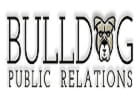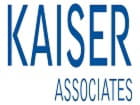ARLINGTON, Va. and LONDON, Aug. 02, 2018 (GLOBE NEWSWIRE) -- Willis Towers Watson (NASDAQ: WLTW), a leading global advisory, broking and solutions company, today announced financial results for the second quarter of 2018, which ended June 30, 2018.
As of January 1, 2018, the Company adopted Accounting Standards Codification 606, Revenue From Contracts With Customers (“ASC 606”). The adoption of this new pronouncement had a material impact to the timing, amounts and classifications of certain results and balances within our condensed consolidated financial statements in 2018. As we move past the adoption year, the full year financial results will generally be more comparable to the 2017 reported results.
As required by ASC 606, under the modified retrospective method of adoption, the Company has provided the impact to the affected line items within the condensed consolidated financial statements for 2018. The 2017 comparative financial line items have not been restated in accordance with the new standard. In an effort to allow the reader to better understand the impact this guidance had on our reported results, we have also included our 2018 results, without the adoption effects of ASC 606, as supplemental information. A more comprehensive explanation of the changes in accounting methodology can be found in the supplemental slides to this press release which have been posted to www.willistowerswatson.com and were furnished today on a Form 8-K report filed with the SEC.
The Company also adopted ASU No. 2017-07, Improving the Presentation of Net Periodic Pension Cost and Net Periodic Postretirement Benefit Cost which became effective January 1, 2018 and has been applied retrospectively. As a result of the adoption, the current service-cost component for postretirement benefit cost will remain in Salaries and Benefits and the other components will be included in the Other income, net line.
Excluding the Revenue Standard
Without the impact of ASC 606, revenue was $2.0 billion for the quarter, an increase of 4% (2% increase constant currency and 3% increase organic) as compared to $1.95 billion for the same period in the prior year.
For the first half of 2018, without the impact of ASC 606, revenue was $4.6 billion, an increase of 7% (3% increase constant currency and 4% increase organic) as compared to $4.3 billion for the same period in the prior year.
Net income attributable to Willis Towers Watson for the second quarter of 2018 was $82 million, a 148% increase from $33 million for the prior-year second quarter. For the quarter, diluted earnings per share were $0.62, and adjusted diluted earnings per share were $1.88. Net income attributable to Willis Towers Watson and diluted earnings per share for the second quarter of 2018 include pre-tax $55 million of transaction and integration expenses. The U.S. GAAP tax rate for the quarter was 14% and the adjusted tax rate for the quarter used in calculating adjusted diluted earnings per share was 20%.
For the first half of 2018, net income attributable to Willis Towers Watson was $523 million, a 39% increase from $377 million for the same period in the prior year. Diluted earnings per share for the first half of 2018 were $3.94, and adjusted diluted earnings per share were $6.29. Net income attributable to Willis Towers Watson and diluted earnings per share for the first half of 2018 included pre-tax $98 million of transaction and integration expenses.
Net income for the second quarter of 2018 was $89 million, a 117% increase from net income of $41 million for the prior-year second quarter. Adjusted EBITDA for the second quarter of 2018 was $427 million, or 21.1% of revenue, as compared to Adjusted EBITDA of $387 million, or 19.8% of revenue, for the prior-year second quarter. This represents an increase of 130 basis points in Adjusted EBITDA margin over the prior-year second quarter.
For the first half of 2018, net income was $536 million, an increase from net income of $393 million for the same period in the prior year. Adjusted EBITDA for the first half of 2018 was $1.3 billion, or 27.7% of revenue, an increase from Adjusted EBITDA of $1.1 billion, or 25.6% of revenue, for the same period in the prior year. This represents an increase of 210 basis points in Adjusted EBITDA margin over the same period in the prior year.
Including the Revenue Standard
With the impact of ASC 606, revenue was $2.0 billion for the quarter and $4.3 billion for the first half of 2018.
Net income attributable to Willis Towers Watson for the second quarter of 2018 was $58 million. For the quarter, diluted earnings per share were $0.44, and adjusted diluted earnings per share were $1.70. Net income attributable to Willis Towers Watson and diluted earnings per share for the second quarter of 2018 include pre-tax $55 million of transaction and integration expenses. The U.S. GAAP tax rate for the quarter was 13% and the adjusted tax rate for the quarter used in calculating adjusted diluted earnings per share was 20%.
For the first half of 2018, net income attributable to Willis Towers Watson was $273 million. Diluted earnings per share for the first half of 2018 were $2.05, and adjusted diluted earnings per share were $4.41. Net income attributable to Willis Towers Watson and diluted earnings per share for the first half of 2018 included pre-tax $98 million of transaction and integration expenses.
Net income for the second quarter of 2018 was $65 million. Adjusted EBITDA for the second quarter of 2018 was $392 million, or 19.7% of revenue.
For the first half of 2018, net income was $286 million. Adjusted EBITDA for the first half of 2018 was $0.9 billion, or 22.2% of revenue.
Free cash flow was $254 million compared with free cash outflow of $47 million in the first quarter 2018, representing a $301 million improvement during the second quarter. Free cash outflow in the first quarter was related to the timing of annual bonus payments.
The Company repurchased approximately $269 million of Willis Towers Watson stock during the second quarter of 2018.
“We delivered another solid quarter of financial results, and I am pleased with our results for the first half of 2018,” said John Haley, Willis Towers Watson’s chief executive officer. “Operationally, during the first half of the year, we delivered strong organic revenue growth, continued margin expansion, improved cash flow generation and significant earnings per share growth. We remain committed to building on our strong foundation so that we can continue to serve the needs of our clients, and we remain well-positioned to gain market share and deliver value for our clients, colleagues and shareholders.”
Second Quarter Company Highlights
Segment Highlights
Beginning in 2018, we made certain changes that affect our segment results. These changes include the realignment of certain businesses within our segments, as well as changes to certain allocation methodologies to better reflect the ongoing nature of our businesses. The prior period comparatives have been retrospectively adjusted to reflect our current segment presentation. These changes were unrelated to ASC 606.
Human Capital & Benefits
Excluding the Revenue Standard
Excluding the impact of ASC 606, for the quarter, the Human Capital & Benefits (HCB) segment had revenue of $750 million, an increase of 3% (1% increase constant currency and 3% increase organic) from $726 million in the prior-year second quarter. Retirement revenue increased in the second quarter with growth in North America, Great Britain and Western Europe. That growth was generated through increased demand for consulting and project work. Health and Benefits had solid growth with increased advisory work and global benefit marketplace placements, while the Technology and Administration Solutions business experienced growth in Great Britain and Western Europe as a result of new administration clients and project activity. Talent and Rewards revenue declined due to lower demand for advisory projects in North America and Great Britain. The HCB segment had an operating margin of 16% compared to 17% for the prior-year second quarter, with the decline driven by certain large client investments.
Including the Revenue Standard
The HCB segment had revenue of $780 million and an operating margin of 19%. The primary driver in the different accounting methodologies is that more of our revenue, related to healthcare policies, is recognized over time, which is more consistent with our service delivery in this area.
Corporate Risk & Broking
Excluding the Revenue Standard
Excluding the impact of ASC 606, for the quarter, the Corporate Risk & Broking (CRB) segment had revenue of $669 million, an increase of 4% (2% increase constant currency and 2% increase organic) from $644 million in the prior-year second quarter, driven by growth globally across most geographies. The growth was highlighted by particular strength in the International and North America regions, attributable to new business generation and strong management of the renewal book portfolio. Great Britain had a decline in revenue due to reduced Transportation business. The CRB segment had an operating margin of 13% compared to 16% for the prior-year second quarter due to the decrease in Great Britain revenue and segment wide investments.
Including the Revenue Standard
For the quarter, the CRB segment had revenue of $674 million and an operating margin of 14%. The primary difference between accounting methodologies is the proration of additional Affinity products under the new standard. This will have no impact on the 2018 annual revenue, as all policies were effective as of January 1st. The difference in expense is due to the new requirement related to the change of revenue recognition to defer placement costs and expense them upon the effective date of a policy.
Investment, Risk & Reinsurance
Excluding the Revenue Standard
Excluding the impact of ASC 606, for the quarter, the Investment, Risk & Reinsurance (IRR) segment had revenue of $379 million, an increase of 1% (1% decrease constant currency and 1% increase organic) from $374 million in the prior-year second quarter. Reinsurance, Investment, Insurance Consulting and Technology, and Max Matthiessen all posted revenue growth, primarily as a result of increased sales. Wholesale revenue declined mainly driven by the timing of revenue that was accelerated into the first quarter of 2018, and less demand in the Specialty and Programs businesses. Underwriting and Capital Management experienced a decline as a result of the divestiture of a portion of the U.S. programs business in 2017 and the Loan Protector businesses in the first quarter of 2018. The IRR segment had an operating margin of 23% as compared to 24% for the prior-year second quarter related to new product investments.
Including the Revenue Standard
For the quarter, the IRR segment had revenue of $385 million and an operating margin of 23%. The primary driver in the different accounting methodologies is related to the change of revenue recognition for the proportional treaty reinsurance broking arrangements to recognizing the estimated revenue upon the effective date of the policy.
Benefits Delivery and Administration
Excluding the Revenue Standard
Excluding the impact of ASC 606, for the quarter, the Benefits Delivery and Administration (BDA) segment had revenue of $195 million, an increase of 9% (9% increase constant currency and 9% increase organic) from $178 million in the prior-year second quarter. BDA’s growth was the result of its expanded client base, new membership and enrollments across all businesses. The BDA segment had an operating margin of 25%, as compared to 19% for the prior-year second quarter due to increased revenue and greater operating efficiency.
Including the Revenue Standard
The BDA segment had revenue of $119 million and an operating margin of negative 26%. The primary driver in the difference between accounting standards is that the Individual Marketplace revenue are now being recognized at the date of placement rather than prorating the revenue through the twelve-month period. Most of the revenue generated by placements made in the 2017 fall enrollment period was recorded as an adjustment to the opening balance of Retained Earnings as of January 1, 2018. As a result of adopting ASC 606, revenue in Individual Marketplace will be concentrated in the fourth quarter of 2018.
Reconciliation of Segment Operating Income to Income from Operations before Income Taxes
For the second quarters of 2018 and 2017, the Company recorded expenses that are excluded from our segment operating income. The following table reconciles the difference.
Outlook for 2018
Without the impact of ASC 606, for 2018, the Company continues to expect constant currency revenue growth of around 3%, and 4% on an organic basis; and Adjusted Diluted Earnings per Share in the range of $9.88 to $10.12. We are adjusting the tax guidance slightly from 23% to 24% to a range of 22% to 23% for 2018.
About Willis Towers Watson
Willis Towers Watson (NASDAQ: WLTW ) is a leading global advisory, broking and solutions company that helps clients around the world turn risk into a path for growth. With roots dating to 1828, Willis Towers Watson has more than 43,000 employees and serving more than 140 countries. We design and deliver solutions that manage risk, optimize benefits, cultivate talent, and expand the power of capital to protect and strengthen institutions and individuals. Our unique perspective allows us to see the critical intersections between talent, assets and ideas — the dynamic formula that drives business performance. Together, we unlock potential. Learn more at willistowerswatson.com.















